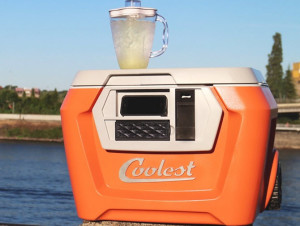
Well, no one wants that, so we’ve got a few ways to help in cooling down the all-important hardware. Some of these techniques are better suited to medium-sized companies while others work better for larger ones, but ultimately the goal is the same.
First off, one tip is to observe how “congested” hardware is. Tech together greatly increases heat because there’s so much electricity drawn to one place. Instead, look for ways to space out things like server racks and make sure all on-site hardware has enough room to “breathe.”
Congestion won’t stop there either. One of the easily overlooked areas of excess heat is sloppy cable management. Wires that tangle together or look like a wild collection of vines are simply feeding heat back to parts of its connected hardware. Not to mention, it’s incredibly inefficient and costly when not properly sorted for maintenance.
Speaking of hardware, there are a couple of things to do that can reduce how much heat it produces. For one, make sure that your office doesn’t have idle or unused tech. Even if it’s not on, a neglected but plugged in device is still drawing power. Then, of course, another option is to eliminate the need for it entirely. Companies that can afford the infrastructure might consider virtualization, which as it sounds, creates an emulated version of hardware. Since virtualization can run multiple things on a single PC set up, it cuts down on excess tech in general.
Another idea is to observe the rooms technology is stored in, mostly where the aforementioned problems of congestion occur. Do this to look for how heat is actually escaping the room. If it’s not vented properly, it won’t matter how many cooling fans are in place because the heat is still circulating in a small space.
Failing any of these, routine checkups from proper maintenance can also ensure there are no blind spots when it comes to excess heat. Essentially, it comes down to properly monitoring and attending to inefficiencies, as a lot of overheat issues occur due to negligence or human error.
So this summer, don’t sweat the heat, doubly so for your hardware. Failure from temperatures leads to costly issues down the road that you can easily avoid with the tips we’ve mentioned here.


